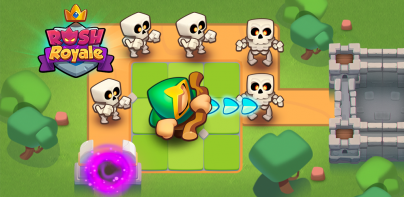


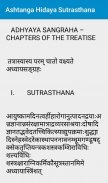
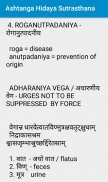
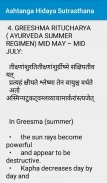

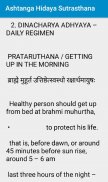
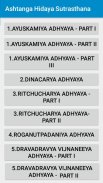

Ashtanga Hridaya Sutrasthana

Description of Ashtanga Hridaya Sutrasthana
Ashtanga Hridaya is the third major treatise on Ayurveda. It was written by Vagbhata around the 7th century (AD 500). It is predominantly based on the teachings of Charaka and Susruta Samhitas though it also gives its own views on different topics. It contains information regarding the two schools of ayurveda, namely the school of surgery and the school of physicians.
Ashtanga Hridaya Samhita is written in Sanskrit in the form of simple and easily understood poetic verses. It contains the salient features of the texts written by Charaka and Sushruta as well as the essence of Ashtanga Samgraha.The book contains about 7120 poetic verses. Mainly focussing on kayachikitsa, Ashtanga Hridaya also discusses in detail about various surgical treatments. The kapha subtypes are first listed and described in this samhita, with exhaustive explanation of vata, pitta, and kapha along with their five subtypes.
This text is considered as a combined form of both the Atreya and Dhanwanthari schools. Many of the ayurvedic medicines are prepared through the methods described in Ashtanga Hridaya.
Ashtanga Hridya Samhita is divided into sutra , nidana, sharira, chikitsa, kalpa, and uttara sthana, and was also written by Vagbhata. It contains 120 chapters and the author quotes Charaka, Susruta Bhela, Nimi, Kasyapa, Dhanvantari and other earlier authors and their works; the chief source, however, is Ashtanga Samgraha. It s a complete but concise description of Ayurvedic medicine.
Astanga Hridaya seems to emphasize on the physiological aspect of the body rather than the spiritual aspects of it like its counterparts—Charaka and Susruta Samhitas. Despite that, the quality and range of its discussions about ayurveda makes it a work to reckon with.
Ashtanga Hridaya Samhita is a systematized text of human illnesses and is a third major treatise in Ayurveda. Astanga Hridaya focuses more on the physiological aspect of the body rather than the spiritual aspects of it.
Ashtanga Samgraha and Ashtanga Hridya, particularly the latter, indicate advancement in knowledge over the two samhitas of Charaka and Susruta. This is particularly noticeable in the new drugs and some of the new surgical procedures that have been introduced.
Ashtanga Hridaya (Ashta = 8; Anga = organ) deals with the 8 angas or organs of the body. namely:
Kaya chikitsa (treats the body)
Baala chikitsa (pediatrics)
Griha chikitsa (psychiatry)
Urdhvanga chikitsa or shalakya tantra (eye, ear, nose and parts above neck)
Salya tantra (surgery)
Damsthra chikitsa (toxicology like treating snake venom)
Jara chikitsa or rasayana chikitsa (rejuvenation therapy)
Vrishya chikitsa or vajeekarana chikitsa (aphrodisiac therapy)
In Kerala (South India), Ashtanga vaidyas are highly respected and believed in. Ashta Vaidyas were Ayurvedic practitioners well-versed in all the eight different branches of Ayurvedic treatment. Kerala is now known for its Ayurvedic centers mainly because of the Ashta Vaidyas.
Vāgbhata (वाग्भट) is one of the most influential classical writers of ayurveda. Several works are associated with his name as author, principally the Ashtāṅgasaṅgraha (अष्टाङ्गसंग्रह) and the Ashtāngahridayasaṃhitā (अष्टाङ्गहृदयसंहिता). The best current research, however, argues in detail that these two works cannot be the product of a single author. Indeed, the whole question of the relationship of these two works, and their authorship, is very difficult and still far from solution. Both works make frequent reference to the earlier classical works, He was a vedic, as is shown by his explicit praise for the Shiva by name at the start of the Ashtāngasangraha, and his praise of the Shiva under the title "Unprecedented Teacher" in the opening verse of the Ashtānga hridayasamhitā. His work contains syncretic elements.


